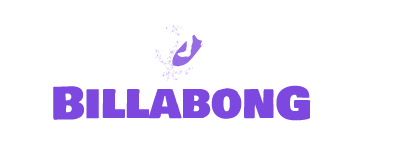October 11, 2001 Picture your high school history class -- except that the teacher is legendary waterman Brian Keaulana and your favorite big-wave heroes -- guys like Darryl "Flea" Virostko, Shawn "Barney" Barron, Shane Dorian and Ken Bradshaw -- are sitting in the front row, listening attentively and eagerly raising their hands to ask the next question.
That was the scene yesterday at the U.S. Coast Guard headquarters at Cape Disappointment, Washington. Where the Billabong Odyssey went one day deeper into its training regimen with a solid five-hour session of traditional schooling. But instead of asking Flea and Barney the date of the Missouri Compromise or the winner of the Civil War, Brian Keaulana gave the crew a curriculum that's applicable the next time they fire up their Wave Runners.
As the Odyssey's Bill Sharp says, "It's incredibly important that we build a base layer around safety." And there's no better builder than Keaulana and his team of watermen, who include Brock Little, Archie Kalepa and Craig Davidson.
Over the course of the afternoon, Keaulana threw out a lot of catch-phrases. Terms like Safety Risk Management, Random Hazard Identification, Incident Command Systems and a whole slew of acronyms (A.C.E., S.S.A.F.E., P.C.-S.E.L.F.) were enough to confuse even the most diligent military bureaucrat, but the message at the end of it all was crystal clear: know your surroundings, be prepared, have a system in place with your group and, according to Keaulana, "deal with the mouse, not the monster."
Keaulana has a Zen approach to lifesaving: keep your movements to a minimum and only put yourself at risk when you absolutely have to. But Keaulana's class wasn't just for the invited surfers' benefit, especially when it's in the context of chasing 100-foot waves. Even though Keaulana and Little are hired as the water safety team, it does say in their contract that they're allowed to ride waves if given the situation. "I need to teach these guys as much as I can," admitted the soft-spoken Westsider. "It could be me who's in trouble when it's on."
So how did his new students fare? Does Keaulana now feel confident putting his life in Barney's hands? Instead of handing them a Scan Tron and No. 2 pencil, Keaulana gave them a final exam where it mattered most: in the water. At 3 p.m. under cold, rainy skies, Team Odyssey headed down to the launch ramp on the inside of Cape Disappointment and started riding. First was the standard PWC pick-up: always approach the surfer on the left side, grab 'em just below the elbow and, as you hit the gas, swing your partner on the life sled. Then came time to rescue the "unconscious" surfer. "How the hell am I supposed to lift Bradshaw out of the water?" asked Dorian. "He's, like, 10 times bigger than me."
"Lifesaving is way harder than it looks," added Gerlach.
But after a couple of hours at the throttle, the crew got the hang of it. Skindog hoisted an "unconscious" Loya onto the sled before that imaginary 100-footer even came close. Bradshaw and Dorian were like Batman and Robin -- Boy Wonder was hoisting Bruce Wayne to safety as if he were a featherweight tandem partner. "I'm so stoked to have Bradshaw as my guy," said Dorian after the session. "He's a master when it comes to the method."
And when the PWCs pulled back up to the ramp at dusk and the fingers set in with rigormortis, every single one of the eight invited surfers felt they received a whole winter's worth of valuable information in one short day. "It was huge," said Mike Parsons. "I have to say I feel a lot more prepared."
Good thing. Because when it comes time to an actual "Random Hazard Identification," Brian Keaulana knows the truth: "They'll be on their own."-- Evan Slater
